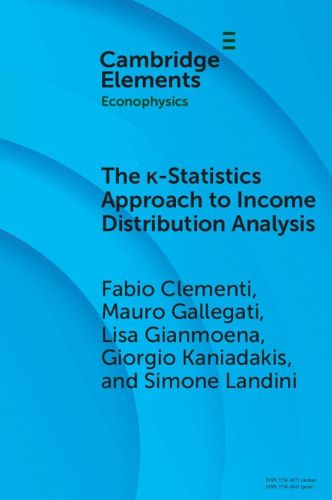Readings Newsletter
Become a Readings Member to make your shopping experience even easier.
Sign in or sign up for free!
You’re not far away from qualifying for FREE standard shipping within Australia
You’ve qualified for FREE standard shipping within Australia
The cart is loading…






This Element presents the ?-generalized distribution, a statistical model tailored for the analysis of income distribution. Developed over years of collaborative, multidisciplinary research, it clarifies the statistical properties of the model, assesses its empirical validity and compares its effectiveness with other parametric models. It also presents formulas for calculating inequality indices within the ?-generalized framework, including the widely used Gini coefficient and the relatively lesser-known Zanardi index of Lorenz curve asymmetry. Through empirical illustrations, the Element criticizes the conventional application of the Gini index, pointing out its inadequacy in capturing the full spectrum of inequality characteristics. Instead, it advocates the adoption of the Zanardi index, accentuating its ability to capture the inherent heterogeneity and asymmetry in income distributions.
$9.00 standard shipping within Australia
FREE standard shipping within Australia for orders over $100.00
Express & International shipping calculated at checkout
This Element presents the ?-generalized distribution, a statistical model tailored for the analysis of income distribution. Developed over years of collaborative, multidisciplinary research, it clarifies the statistical properties of the model, assesses its empirical validity and compares its effectiveness with other parametric models. It also presents formulas for calculating inequality indices within the ?-generalized framework, including the widely used Gini coefficient and the relatively lesser-known Zanardi index of Lorenz curve asymmetry. Through empirical illustrations, the Element criticizes the conventional application of the Gini index, pointing out its inadequacy in capturing the full spectrum of inequality characteristics. Instead, it advocates the adoption of the Zanardi index, accentuating its ability to capture the inherent heterogeneity and asymmetry in income distributions.